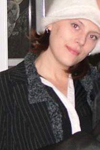Welcome To Our Site
FRIENDS DON'T LET FRIENDS DIE.COM
Participate in our forum
Ask The White House
State and Federal Drug Laws
Regarding Death or Serious Injury
Drug Enforcement Administration(DEA)
Drug Trafficking Penalties
Patchwork of Penalties
Find your State's Statutes
Contact your Congressman
Senator or Governor
Crime Victims
Bill of Rights and Compensation
About This Site
State News
Chat
Our Children
Click on a name below to see their page
Danielle McCarthy
Washington
Christi Nowak
Georgia
Anke Furber
Georgia
Levi Wren
Washington
Ephrain Schultz
New York
Mark R Ellis
Rhode Island
Sean P. Efford
New Mexico
Caitlyn Brady
New Hampshire
Katty McGuire Andrea
Washington
JP Faulk
Florida
Michael Miller
Massachusetts
Chuck Tabaka
Wisconsin
Miranda Daly
California
Jamie Leavitt
Washington
Kaylin Marie Mathews
California
RJ Davis
Alabama
Billy Grandchamp
Rhode Island
Nicholas Werhofnik
Georgia
Rebecca Marks
New York
Dustin Kueter
South Dakota
Chase Denver Julian
Louisiana
Katelynn Porter
Ontario,Canada
Tony Trujillo
Colorado
Billy Joe Towle Jr.
Michigan
Kelley Wilson
Alabama
Rhiannon Fraser
Florida
Vivianna Satterfield
New Mexico
Kelli Laine Lewis
South Carolina
Taylor Smith
Georgia
 Danielle cherished family, friends and life. She had her whole life planned
out; her husband, number of kids, two dogs and would be a dermatologist, a career
where she could help others but have time for her family.
Danielle cherished family, friends and life. She had her whole life planned
out; her husband, number of kids, two dogs and would be a dermatologist, a career
where she could help others but have time for her family.  Christi had just enrolled in college. She just began taking First Baptist Church
shuttles downtown every Thursday to befriend the homeless. Just chit chatting
with them and letting them know they had a friend. In her journals, she was
determined to turn her life around and she started by helping others. She volunteered
often for the M.U.S.T. Ministries to help set up their clothing shop for the
homeless and the children's center. She helped cooked their meals. She helped
do their laundry. She wanted to go into a field helping others. She would have
changed at least one person's life, for the better, when they thought there
was no more hope. She didn't show up last Thursday. She died.
Christi had just enrolled in college. She just began taking First Baptist Church
shuttles downtown every Thursday to befriend the homeless. Just chit chatting
with them and letting them know they had a friend. In her journals, she was
determined to turn her life around and she started by helping others. She volunteered
often for the M.U.S.T. Ministries to help set up their clothing shop for the
homeless and the children's center. She helped cooked their meals. She helped
do their laundry. She wanted to go into a field helping others. She would have
changed at least one person's life, for the better, when they thought there
was no more hope. She didn't show up last Thursday. She died.  In the months before she was killed, 21-year-old Anke Furber had been acting
scared and she seemed to know she was in danger. Several days after Furber's
charred remains were discovered in a small vineyard in Norcross, Anke's mom,
Ria, found a note in Anke's desk at home in Marietta. In it, Anke seemed to
foreshadow her own death. She wrote, "My parents would surely grieve the loss
of their wonderful daughter whose craziness would soon lead to her slaughter".
Ria isnt sure exactly when the note was written, but believes it was written
in a close time frame to the actual murder.
In the months before she was killed, 21-year-old Anke Furber had been acting
scared and she seemed to know she was in danger. Several days after Furber's
charred remains were discovered in a small vineyard in Norcross, Anke's mom,
Ria, found a note in Anke's desk at home in Marietta. In it, Anke seemed to
foreshadow her own death. She wrote, "My parents would surely grieve the loss
of their wonderful daughter whose craziness would soon lead to her slaughter".
Ria isnt sure exactly when the note was written, but believes it was written
in a close time frame to the actual murder.  At 22 years old, Levi had goals and ambitions of being a business owner, a husband
and a father. He loved his family and friends with everything in him and would
do anything for you. His shyness and manners we're a shining attribute to who
he was. Unfortunately, Levi befriended someone who for nearly three years took
advantage of his kindness and when asked to leave his home, he killed him. If
he would have just walked out the door as asked, Levi would still be here today.
We'll never know all the wonderful things that Levi would have accomplished,
but we know he was a "Friend" till the end.
At 22 years old, Levi had goals and ambitions of being a business owner, a husband
and a father. He loved his family and friends with everything in him and would
do anything for you. His shyness and manners we're a shining attribute to who
he was. Unfortunately, Levi befriended someone who for nearly three years took
advantage of his kindness and when asked to leave his home, he killed him. If
he would have just walked out the door as asked, Levi would still be here today.
We'll never know all the wonderful things that Levi would have accomplished,
but we know he was a "Friend" till the end.  Ephraim was 21 yrs old when he prematurely transitioned to the other side. He
was a very warm hearted young man. And was always available to help friends
and family. As his cousin Ben said about him: "You can lay a 1,000. on the table
and know completely that Ephraim would have never taken it". He spent most of
his days at Antique World in Clarence , NY which was owned and operated by his
Uncle. That was my sons world. A world he will no longer be able to participate
in. He is sorely missed by his family and friends.
Ephraim was 21 yrs old when he prematurely transitioned to the other side. He
was a very warm hearted young man. And was always available to help friends
and family. As his cousin Ben said about him: "You can lay a 1,000. on the table
and know completely that Ephraim would have never taken it". He spent most of
his days at Antique World in Clarence , NY which was owned and operated by his
Uncle. That was my sons world. A world he will no longer be able to participate
in. He is sorely missed by his family and friends.  Mark suffered a brain injury at the age of 19 the night of a high school prom.
Mark died at the age of 25. Life was hard for Mark, he lived an aphasic life.
Mark struggled to relearn his alphabet and to speak again. Neuro rehab, drug
rehab, jails, institutions and death. Mark was disabled and a fighter all at
the same time. College, heavy equipment operator, volunteering were all part
of these six years. Mark loved kids and wished he had one. Due to the selfish
reasoning of his so called friends, Mark will never be able to achieve his dreams
that he fought so hard for. Mark's struggle is over !! PEACE..........
Mark suffered a brain injury at the age of 19 the night of a high school prom.
Mark died at the age of 25. Life was hard for Mark, he lived an aphasic life.
Mark struggled to relearn his alphabet and to speak again. Neuro rehab, drug
rehab, jails, institutions and death. Mark was disabled and a fighter all at
the same time. College, heavy equipment operator, volunteering were all part
of these six years. Mark loved kids and wished he had one. Due to the selfish
reasoning of his so called friends, Mark will never be able to achieve his dreams
that he fought so hard for. Mark's struggle is over !! PEACE..........  His friends describe him as a kind, warm hearted, full of energy, always smiling,
and a very silly young man. They also said that whenever Sean walked into a
room that he had the ability lighting up the room because he was full of life
and energy! He loved his dad, his mom, and his sister very much. He had a very
special bond with his great grandma Efford and his great aunt Charlene whom
also up in heaven with him. A warm hug from Sean was just another way that he
showed his affection to his family and friends
His friends describe him as a kind, warm hearted, full of energy, always smiling,
and a very silly young man. They also said that whenever Sean walked into a
room that he had the ability lighting up the room because he was full of life
and energy! He loved his dad, his mom, and his sister very much. He had a very
special bond with his great grandma Efford and his great aunt Charlene whom
also up in heaven with him. A warm hug from Sean was just another way that he
showed his affection to his family and friends  When Cayte was in the middle school she was on the track team, she was a cheerleader
for the Nor-Roc Vikings, she was on a soccer team, and she loved attending the
dances at the Sad Cafe. When she went to high school, all of those activities
stopped. The sad reason was because she was too old. All the kids have, once
they reach high school, are the woods and the homes of friends when the parents
are at work. If she had activities to do after school when she went to high
school, maybe this wouldn't have happened.
When Cayte was in the middle school she was on the track team, she was a cheerleader
for the Nor-Roc Vikings, she was on a soccer team, and she loved attending the
dances at the Sad Cafe. When she went to high school, all of those activities
stopped. The sad reason was because she was too old. All the kids have, once
they reach high school, are the woods and the homes of friends when the parents
are at work. If she had activities to do after school when she went to high
school, maybe this wouldn't have happened.  From her birth to her passing Katty touched so many lives. Not only did her
family have the joy of watching her grow from a 6 pound baby girl to a beautiful
young woman, but so many others did as well. The lives she touched are too many
to fathom. Her beauty and grace preceded her where ever she went. Her heart
was made of fine gold and she cared for others always before herself. She was
not just special to all of us but to the Lord who saw fit to call her home at
such a young age. Her mansion was ready! When we think of Katty now we all can
be at peace because we know she is with her Lord, never to face this harsh world
we live in day to day. She is with us always when we remember her smile, her
touch, and her kind words. We all had the pleasure of being touched by an ANGEL!
From her birth to her passing Katty touched so many lives. Not only did her
family have the joy of watching her grow from a 6 pound baby girl to a beautiful
young woman, but so many others did as well. The lives she touched are too many
to fathom. Her beauty and grace preceded her where ever she went. Her heart
was made of fine gold and she cared for others always before herself. She was
not just special to all of us but to the Lord who saw fit to call her home at
such a young age. Her mansion was ready! When we think of Katty now we all can
be at peace because we know she is with her Lord, never to face this harsh world
we live in day to day. She is with us always when we remember her smile, her
touch, and her kind words. We all had the pleasure of being touched by an ANGEL! We want our son's name to be Remembered and to bring hope and joy out of something
that has been the darkest and heartbreaking days of our families life. JP was
very out spoken and we have decided to be that way on this site and to be his
voice about the drug companies and the public official's that sit back and do
nothing. If we could save one person from what our family had to go Through
and is still going Through, it would be all worth it We will not stop until
the truth gets out. We want his memory to live on.
We want our son's name to be Remembered and to bring hope and joy out of something
that has been the darkest and heartbreaking days of our families life. JP was
very out spoken and we have decided to be that way on this site and to be his
voice about the drug companies and the public official's that sit back and do
nothing. If we could save one person from what our family had to go Through
and is still going Through, it would be all worth it We will not stop until
the truth gets out. We want his memory to live on.  Time has gone by so quickly and it seems like we haven't seen your face in forever.
Our hearts are broken, our tears flow so freely and our souls feel empty. Michael,
you left us with so many happy memories but the memories can never take your
place. We know you and your uncle Sam are saving a place for those who cherished
you the most.
Time has gone by so quickly and it seems like we haven't seen your face in forever.
Our hearts are broken, our tears flow so freely and our souls feel empty. Michael,
you left us with so many happy memories but the memories can never take your
place. We know you and your uncle Sam are saving a place for those who cherished
you the most.  Two weeks before he died, Chuck called me on the phone. He was excited to tell
me he was joining the National Guard. He had begun to think about being a History
Teacher. He planned to attend school after basic training. He also mentioned
a new girlfriend. He was pretty crazy about her but wanted to give things a
little more time before making her "meet the parents". Still, we made plans
to meet for lunch once July wound down. He thought we might all get together
and told me not to worry, he had a job and would help pay the check. The first
time I met the young lady he was so crazy about was as she cried herself senseless
over his casket. She laid a broken heart chain and necklace across his hands.
She wore the mating half around her slender neck. Her courage in court helped
to solidify the deal that sent a drug dealer to prison. I hope she, and Chuck's
other friends, make the right decision and swear off drug use so we may never
see their faces on these pages.
Two weeks before he died, Chuck called me on the phone. He was excited to tell
me he was joining the National Guard. He had begun to think about being a History
Teacher. He planned to attend school after basic training. He also mentioned
a new girlfriend. He was pretty crazy about her but wanted to give things a
little more time before making her "meet the parents". Still, we made plans
to meet for lunch once July wound down. He thought we might all get together
and told me not to worry, he had a job and would help pay the check. The first
time I met the young lady he was so crazy about was as she cried herself senseless
over his casket. She laid a broken heart chain and necklace across his hands.
She wore the mating half around her slender neck. Her courage in court helped
to solidify the deal that sent a drug dealer to prison. I hope she, and Chuck's
other friends, make the right decision and swear off drug use so we may never
see their faces on these pages.  Everyone ever touched by Miranda. This will be a tribute to the life she lived.
She was the most remarkable and inspirational woman I have ever known. I was
in awe of my own daughter. Even as her mother, her beauty took my breath away,
and as she walked this earth from her crawling stages to adulthood her beauty
from the inside amazed me. Miranda loved about every living thing and each friend
she had she made her relationship with them special and unique.
Everyone ever touched by Miranda. This will be a tribute to the life she lived.
She was the most remarkable and inspirational woman I have ever known. I was
in awe of my own daughter. Even as her mother, her beauty took my breath away,
and as she walked this earth from her crawling stages to adulthood her beauty
from the inside amazed me. Miranda loved about every living thing and each friend
she had she made her relationship with them special and unique.  Jamie was a very loving son, brother, grandson, nephew, boyfriend and friend..
Most importantly he was the best father anyone could have asked for.. Even though
he was only 16 when he was taken away from us from his so called friend, he
did everything for his daughter and mother of his daughter that he had
asked to marry him when he turns 18.. Jamie was the type of kid that would take
his shirt off his back for anyone that needs it.. Jamie died on April
23, 2008.. If only his so called friend (29 yrs old), his mother and the other
people at the home called 911 instead of waiting 3 hours, he would still be
here with us today.. Jamie's dad passed away Nov 2005 and he had a hard time
dealing with loosing his father and could not believe he was gone.. Well now
Jamie is at home with his dad..Until we meet again... I am proud of you my son..Love
you always and forever, Mommy
Jamie was a very loving son, brother, grandson, nephew, boyfriend and friend..
Most importantly he was the best father anyone could have asked for.. Even though
he was only 16 when he was taken away from us from his so called friend, he
did everything for his daughter and mother of his daughter that he had
asked to marry him when he turns 18.. Jamie was the type of kid that would take
his shirt off his back for anyone that needs it.. Jamie died on April
23, 2008.. If only his so called friend (29 yrs old), his mother and the other
people at the home called 911 instead of waiting 3 hours, he would still be
here with us today.. Jamie's dad passed away Nov 2005 and he had a hard time
dealing with loosing his father and could not believe he was gone.. Well now
Jamie is at home with his dad..Until we meet again... I am proud of you my son..Love
you always and forever, Mommy  Kaylin Marie Mathews was born on a Tuesday March 1, 1988. Kaylin was my oldest
child and my only daughter. She could play the piano, guitar, and drums and
loved to sing. She had been "spinning records" the last few years and loved
to mix music. She had been working as a d.j. at the time of her death and was
very good. Kaylin was an only child for 71/2 years. She has one brother and
one sister. She was a talented writer. She made jewelry and she could draw.
There was nothing that my baby couldn't do, if she wanted to. Kaylin was left
to die in a ravine on June 30, 2008. She was found on July 1, 2008. Her date
of death is listed as a Tuesday July 1, 2008. She was 20 years old. I miss her
every second of every day. The world lost an amazing talent and an amazing young
woman. I lost a part of my heart.
Kaylin Marie Mathews was born on a Tuesday March 1, 1988. Kaylin was my oldest
child and my only daughter. She could play the piano, guitar, and drums and
loved to sing. She had been "spinning records" the last few years and loved
to mix music. She had been working as a d.j. at the time of her death and was
very good. Kaylin was an only child for 71/2 years. She has one brother and
one sister. She was a talented writer. She made jewelry and she could draw.
There was nothing that my baby couldn't do, if she wanted to. Kaylin was left
to die in a ravine on June 30, 2008. She was found on July 1, 2008. Her date
of death is listed as a Tuesday July 1, 2008. She was 20 years old. I miss her
every second of every day. The world lost an amazing talent and an amazing young
woman. I lost a part of my heart.  R.J. was truly a blessing in our lives. He was the kind of son that most parents
only dream of having. He always respected and obeyed his parents and never got
in trouble. RJ was never in trouble in his life RJ always called home to let
us know where he was and when he would be home. When he was missing and we couldn't
reach him on his cell phone, we knew immediately something terrible was wrong.
This is a nightmare that no parent should have to go through and we are living
it. Our concern is not what we are going through, but what our son had to go
through in his final moments of life.
R.J. was truly a blessing in our lives. He was the kind of son that most parents
only dream of having. He always respected and obeyed his parents and never got
in trouble. RJ was never in trouble in his life RJ always called home to let
us know where he was and when he would be home. When he was missing and we couldn't
reach him on his cell phone, we knew immediately something terrible was wrong.
This is a nightmare that no parent should have to go through and we are living
it. Our concern is not what we are going through, but what our son had to go
through in his final moments of life.  William Michael Grandchamp better known as Billy, was born Nov 7,1979. HE was
a only child. Billy had many friends. Billy often told his friends that his
MOM was his best friend. Billy liked to collect sports attire like jerseys and
sports caps.Everything he wore had to match. He was meticulous with his clothing,
car, and home. Although, Billy had no children of his own he loved children.
He told me his greatest wish was to find a good girl and settle down and have
a family. That seemed to be very important to him. Even at a young age he had
a gift with children. Billy's friends have always commented on how good he was
with their children and how their children loved him. Billy was loved by so
many people. He had over 800 friends and family members at his wake. Billy will
be greatly missed by all his family and friends.
William Michael Grandchamp better known as Billy, was born Nov 7,1979. HE was
a only child. Billy had many friends. Billy often told his friends that his
MOM was his best friend. Billy liked to collect sports attire like jerseys and
sports caps.Everything he wore had to match. He was meticulous with his clothing,
car, and home. Although, Billy had no children of his own he loved children.
He told me his greatest wish was to find a good girl and settle down and have
a family. That seemed to be very important to him. Even at a young age he had
a gift with children. Billy's friends have always commented on how good he was
with their children and how their children loved him. Billy was loved by so
many people. He had over 800 friends and family members at his wake. Billy will
be greatly missed by all his family and friends. 


 Chase lived life spontaneously with the freedom of a butterfly – a free spirit
& soul – no one could hold him down, except his baby girl. She was his LIFE.
There wasn’t anything he wouldn’t do for her, including getting clean. Chase
was clean 1.5 yrs, after 6 months in residential rehab in New Orleans, continued
with NA meetings, substance abuse group counseling, and sought out a Navy recruiter
who told him all he would have to do to be eligible. He seemed to be on his
way, until he fell off the wagon 12 days out of jail. Turning to heroin again
to deal with stress was the mistake of his life. “Chase’s Story” is shared with
you on his main page. Thanks for taking time to read it. Sincere and heartfelt
thanks to the FDLFD Family for taking us under their wings. “They will sing
me to them, and I will hear.” ~RIP Chase~4evrYng~1985-2009
Chase lived life spontaneously with the freedom of a butterfly – a free spirit
& soul – no one could hold him down, except his baby girl. She was his LIFE.
There wasn’t anything he wouldn’t do for her, including getting clean. Chase
was clean 1.5 yrs, after 6 months in residential rehab in New Orleans, continued
with NA meetings, substance abuse group counseling, and sought out a Navy recruiter
who told him all he would have to do to be eligible. He seemed to be on his
way, until he fell off the wagon 12 days out of jail. Turning to heroin again
to deal with stress was the mistake of his life. “Chase’s Story” is shared with
you on his main page. Thanks for taking time to read it. Sincere and heartfelt
thanks to the FDLFD Family for taking us under their wings. “They will sing
me to them, and I will hear.” ~RIP Chase~4evrYng~1985-2009  Katelynn Lillian Porter, 16, of West Elgin, was killed in a car crash on Dunborough
Rd. in Elgin County. “In loving memory of Katelynn Porter. 12/12/09. 9:40 p.m.”
is written between two hearts on the roadside memorial, a makeshift cross. Porter
was a student at West Elgin secondary school, where officials are trying to
come to grips with the news of her death, especially so close to Christmas.
Katelynn Lillian Porter, 16, of West Elgin, was killed in a car crash on Dunborough
Rd. in Elgin County. “In loving memory of Katelynn Porter. 12/12/09. 9:40 p.m.”
is written between two hearts on the roadside memorial, a makeshift cross. Porter
was a student at West Elgin secondary school, where officials are trying to
come to grips with the news of her death, especially so close to Christmas.
 Tony passed away 10 days after his 16th birthday. He asked permission to spend the night at his friends and I told him yes. I told him" I love you" and he replied "I love you too Mom. Tony was the kid who wanted to make everyone laugh. He had such a wonderful sense of humor and a big heart. He would talk to his friends for hours trying to help them solve their problems. He was a loving big brother, and a wonderful son. He would help you with anything without even being asked. Tony was an extremely intelligent child. He was always placed in advanced classes. A week before he passed we received a letter from Columbine informing us that Tony was nominated to participate in their advanced English Program. He had a gift for writing stories.
Tony passed away 10 days after his 16th birthday. He asked permission to spend the night at his friends and I told him yes. I told him" I love you" and he replied "I love you too Mom. Tony was the kid who wanted to make everyone laugh. He had such a wonderful sense of humor and a big heart. He would talk to his friends for hours trying to help them solve their problems. He was a loving big brother, and a wonderful son. He would help you with anything without even being asked. Tony was an extremely intelligent child. He was always placed in advanced classes. A week before he passed we received a letter from Columbine informing us that Tony was nominated to participate in their advanced English Program. He had a gift for writing stories.


 She loved all things technical and mechanical with her older brother Ian and fashion and decorating days with her older sister Genevieve. She loved Gothic country art, the workings of the human body, video games, driving and her new tattoo machine. She loved swimming and surfing. She loved all things living and loved her dog Timpleton and her parrot Thermopolis. She had a strong heart and soul, was an independent and progressive thinker, open minded and a will power like no one else. Her favorite place to go was Barnes and Noble.
She loved all things technical and mechanical with her older brother Ian and fashion and decorating days with her older sister Genevieve. She loved Gothic country art, the workings of the human body, video games, driving and her new tattoo machine. She loved swimming and surfing. She loved all things living and loved her dog Timpleton and her parrot Thermopolis. She had a strong heart and soul, was an independent and progressive thinker, open minded and a will power like no one else. Her favorite place to go was Barnes and Noble.
 Vivianna Satterfield was 15 years old! Vivi was the type of young lady that put other people in front of herself. She would always say "Peace and Love".
Vivianna Satterfield was 15 years old! Vivi was the type of young lady that put other people in front of herself. She would always say "Peace and Love".
 Kelli Laine Lewis is my only daughter. Kelli died when she was 18 after attending a party hosted by 3 adults who offered a $5.00 entry fee to come and drink all you wanted. A pretty tempting offer for teens not old enough to buy alcohol.
Kelli Laine Lewis is my only daughter. Kelli died when she was 18 after attending a party hosted by 3 adults who offered a $5.00 entry fee to come and drink all you wanted. A pretty tempting offer for teens not old enough to buy alcohol.
 Growing up – she had it all. She was smart and witty - she could come up with a jovial comeback in almost any conversation or situation. She wShe was smart and witty - she could come up with a jovial comeback in almost any conversation or situation. She was always photographing everything and always laughing. She had an infectious laugh, loud and squeaky, but incredibly endearing. Taylor was a huge fan of Tyler Perry’s Madea. She owned every play and knew every word to every gospel song in the plays. She would sing them at the top of her lungs to anyone that would listen. as always photographing everything and always laughing. She had an infectious laugh, loud and squeaky, but incredibly endearing.
Growing up – she had it all. She was smart and witty - she could come up with a jovial comeback in almost any conversation or situation. She wShe was smart and witty - she could come up with a jovial comeback in almost any conversation or situation. She was always photographing everything and always laughing. She had an infectious laugh, loud and squeaky, but incredibly endearing. Taylor was a huge fan of Tyler Perry’s Madea. She owned every play and knew every word to every gospel song in the plays. She would sing them at the top of her lungs to anyone that would listen. as always photographing everything and always laughing. She had an infectious laugh, loud and squeaky, but incredibly endearing.
 He went out THE FIRST TIME to celebrate being "LEGAL" with a creep he considered a friend (even though we warned him this guy was not a true friend). My son did not drive so he was picked up about ten thirty. Even when it was obvious my son was having difficulties this creep brought him to his own house , which is 4 houses away for a few hours, and dropped him off here at home in the middle of the night WITHOUT KNOCKING OR CALLING OR WAKING US UP. We found Ben in his bed the next morning when we tried to wake him.
He went out THE FIRST TIME to celebrate being "LEGAL" with a creep he considered a friend (even though we warned him this guy was not a true friend). My son did not drive so he was picked up about ten thirty. Even when it was obvious my son was having difficulties this creep brought him to his own house , which is 4 houses away for a few hours, and dropped him off here at home in the middle of the night WITHOUT KNOCKING OR CALLING OR WAKING US UP. We found Ben in his bed the next morning when we tried to wake him.
Click here to Meet
Our Parents
  Click above to visit Our Sites |
Click on the name below to see full story
|
You Need To Know
Help us spread the word of these unknown dangers we all face
Powerful 'Fake Pot' Sold In Georgia March 2,2010 ATLANTA -- It looks like potpourri, but is smoked like pot; according to kids that are smoking it feels just like marijuana but even stronger. It's a legal herb found at local smoke shops and gas stations marketed under names like K2, Sunset Gold and Nirvana. Channel 2 Action News investigated and found the incense at several local smoke shops. "We sold 25 packs today of this. It flies!," one sales clerk said. The packaging describes the herb as "not for human consumption," but that has not deterred those looking for a legal and undetectable high. Dr. John Huffman a Research Chemist with Clemson University in South Carolina says, "It has the effects of THC, but it's about ten times more potent." One of Dr. Huffman's students discovered a synthetic form of THC, the active ingredient in marijuana, while studying the effects of pharmaceuticals on the brain. "Then, somehow people got the bright idea of spraying this onto or fixing it with plant material and smoking it," he says, "I don't feel responsible for the misuse of a substance that was designed for research, you're dealing with an unknown substance, it's a little bit akin to playing Russian roulette." Since synthetic THC is so new, there is no research on it's toxicity and potential to harm smokers. Some doctors have reported users suffering from hallucinations, vomiting and even seizures. Drug counselor Dr. Robert Margolis of Solutions Outpatient Program in Roswell, told Channel 2 Action News a number of his patients have used the drug. He said, "This is easy to obtain, if you have the money and secondly it's not detectable in a drug screening. It is addictive, it's a dangerous drug and lastly we don't know what the long term affects are going to be." Several counties across the nation have taken steps to ban K2 and similar drugs. Georgia state senator Ed Harbison told Channel 2 Action News reporter Tom Regan that he may consider calling for the same. "I think it's a looming menace and we're going to have to deal with it one way or another," Harbison said.
Owasso Teen Arrested For New Teenage Drug Of Choice
Posted: Feb 18,
2010 1:13 PM PST
By Lori Fullbright, The News On 6
OWASSO, OK -- Police say parents have cause to beware of a new
teenage drug of choice. Owasso police officers arrested
18-year-old Christian Ream, Friday, February 12th in connection to the
drug.
He's accused of giving "Triple-C" to minors.
"Triple-C" is actually over the counter cough medicine called
Coricidin cough and cold pills.
The police report says Ream admitted buying and giving the pills to
four juveniles and watched as each of them took a box of 16 pills.
It says officers learned of the incident after parents of a
14-year-old Owasso girl contacted them after she was admitted to a
hospital on February 11th because of a drug overdose. They told police
she had taken an extreme quantity of Coricidin cough and cold pills.
These aren't the only cases, according to the report.
It says Ream told police that on February 9th he watched two
girls ingest large doses of the medicine and begin "tripping."
The report also mentions two other juveniles who were being checked
by medics after saying they'd each taken 24 Coricidin tablets.
Tainted Cocaine Linked to Serious
Illness
According to the National
Institute on Drug Abuse, using cocaine can have a
variety of adverse effects on the body. Regardless
of how or how frequently cocaine is used, a user can
experience acute cardiovascular or cerebrovascular
emergencies, such as a heart attack or stroke, which
may cause sudden death. Cocaine-related deaths are
often a result of cardiac arrest or seizure followed
by respiratory arrest.
Over the past several days, Canadian news outlets have also begun reporting that tainted cocaine is being linked to several cases of illness in that nation.
Seven
people in
The
individuals developed agranulocytosis, a condition that
makes the immune system incapable of fighting off
infections.
It
makes common infections become serious, even fatal,
quite quickly.
"We
are advising anyone who develops a fever or other signs
of infection and has used cocaine to seek medical
attention quickly," Dr. Gerry Predy,
If you
or someone you know is using cocaine, there is help
available. Use SAMHSA's
drug treatment locater tool to
find the right drug abuse treatment program in your
area.
DRUG
SLANG FOR TEENS
Triple C: This stands
for Coricidin HBP Cough and Cold. "The triple C or CCC is something that
we are seeing a lot of, and that is specific to Coricidin, but anything
with DXM is abused today," adds Kevin M. Gray, MD, an assistant
professor of psychiatry and behavioral sciences at the Medical
University of South Carolina in
Crank: The stimulant
methamphetamine. Synonyms include meth, speed, chalk, white cross, fire,
and glass. "
Crunk: This is a verb
that means to get high and drunk at the same time.
Snow: Cocaine.
Synonyms include Charlie, crack, coke, dust, flake, freebase, lady, nose
candy, powder, rock, rails, snowbirds, toot, white, and yahoo, according
to Phoenix House. "After all this time, alcohol and pot are still the
most used drugs by teens, but cocaine is really a strong third,
especially with females, because of the weight issue," says Janice
Styer, MSW, a clinical coordinator-addictions counselor at Caron
Treatment Center in Wernersville, Pa. "The drug of choice among women
with eating disorders is almost invariably cocaine." A stimulant,
cocaine can decrease appetite.
X: Ecstasy or
3,4-Methylenedioxymethamphetamine (MDMA). Synonyms include Adam, E,
bean, clarity, essence, lovers speed, MDMA, roll, stacy, XTC, according
to the Phoenix House.
Roofies: This refers
to rohypnol, a.k.a. the date rape drug. Synonyms include the forget
pill, La Rocha, Mexican valium, R-2, rib, roachies, roofenol, rophies,
roche (pronounced roe-shay), and rope.
Kibbles and bits: The
attention deficit hyperactivity disorder (ADHD) drug called Ritalin. It
is sometimes also referred to as pineapple, says Pollock.
The new drug - Salvia
|
|
||
|
||
|
|
||
|
Ecstasy Now Being Mixed With Meth
(Feb. 19) - Nick, 16, says ecstasy is rampant in his high school, with
kids often mixing the drug with meth and other substances.
More
than half of all ecstasy seized in the
"You just have to know the right person.
It's about as easy as any other drug. You just gotta ask for it," says
Nick, who asked that his last name not be used. "It's easy to get."
Law enforcement officials say stories like these highlight a disturbing
trend they're seeing across the country. Most alarming, they say, is not
only is ecstasy back after years of decline, but most of the time it's
laced with meth.
More than 55 percent of the ecstasy samples
seized in the
Almost 5.5 million pills
of ecstasy were seized in the states bordering
"They drive them in. They bring them in by boat. They bring them in
by plane. They bring them across by people just carrying them across
their back much like the southwest border," says Ed Duffy, an assistant
special agent in charge for the Drug Enforcement Administration's
northern region.
Because meth is less expensive than ecstasy,
mixing the two saves producers money, but it also makes it more
dangerous, officials say.
Ecstasy can cause sharp increases in body temperature and can result
in liver, kidney or heart damage. When laced with meth, officials say,
the combination can cause more severe harm because meth can damage brain
functions, as well as lead to an increase in breathing, irregular
heartbeats and increased blood pressure. The National Institute on Drug
Abuse says meth -- or methamphetamine -- is a "very addictive stimulant
drug."
Law enforcement officials say European countries cracked
down on ecstasy production in the early 2000s and manufacturing moved to
Finished pills are then pushed
in vast quantities into the
Those on the front lines in
The Mounties have created teams across
"The labs that we're finding now
are what you refer to in the
Each
lab produces more than 10 pounds of ecstasy in one batch, he says. "It's
not your mom and pop operation. It tells me that it is criminal
organizations that are, yes, more sophisticated and producing it for
profit as opposed to producing it to fuel their habit."
It's then
finding its way into schools, like Nick's in
"I have
been seeing an increase in pill use among the teens in general," says
Greg Reid, a counselor at Equinox Community Services Agency, which
sponsors drug counseling and other activities for youth in
"They do
something called 'pharming' where they throw a bunch of pills into a
bowl and kind of choose or take out the pills they want."
Ecstasy pills are often among the drugs of choice in the bowl.
"I have seen that increase in the past two years," Reid says.
"Ecstasy ... can be very dangerous, especially if you don't know what it
is getting mixed with."
![]()
Ecstasy “Did You Know”
![]()
Released January 3, 2007
CANADIAN-MADE, METH-LACED ECSTASY BEING
DUMPED INTO
U.S.
ILLEGAL DRUG MARKETS
Is A Once-Waning Fad Making A Comeback In A Dangerous New Form?
(
The dangerous poly-drug combination of
methamphetamine and Ecstasy can have severe health consequences,
especially as both drugs have toxic effects on the brain. They both can
interfere with the body's ability to regulate temperature, leading to
sharp increases in body temperature (hyperthermia), which can result in
liver, kidney, and cardiovascular system failure and death. The
potential for a life-threatening or fatal overdose is also increased
when meth-laced Ecstasy is combined with alcohol. Recent laboratory
research suggests that Ecstasy and meth combinations may produce greater
adverse neurochemical and behavioral effects than either drug alone.
John Walters, the Nation's “Drug Czar,” said, “This
‘Extreme Ecstasy' is a disturbing development in what has been one of
the most significant international achievements against the illicit drug
trade. Historic progress against Ecstasy availability and use is in
jeopardy of being rolled back by Canadian criminal organizations.
Desperate to develop their client base, they are dangerously altering a
product for which demand by youth and young adults had plummeted, and
are exploiting vulnerabilities along our shared border. This is alarming
for the youth of both
Ecstasy use in the United States rose in the late
1990s with the rise of the ‘Rave' culture, however due to the
well-coordinated national and international response - Ecstasy use in
the U.S. diminished in the early 2000s. In fact, the
And while still lower than its peak in 2002,
past-month Ecstasy use has been increasing over the last two years among
young adults aged 18-25. An estimated 326,000 young adults reported
past-month Ecstasy use in 2006, compared to 231,000 in 2004. These
increases coincide with increased trafficking of Ecstasy from
Prior to 2003, Europe (primarily The Netherlands and
The Royal Canadian Mounted Police (RCMP) estimates
that the current combined production capacity of Canadian Ecstasy
laboratories exceeds 2 million tablets per week. Federal, State, and
local law enforcement agencies along the U.S.–Canada border report large
increases in the flow of Ecstasy from
Alarmingly, more than 55 percent of the Ecstasy
samples seized in the
Federal law enforcement officers are working with the RCMP to put
greater pressure on Canadian Ecstasy producers through increased
intelligence sharing and coordinated enforcement operations, and RCMP
officials are focusing their efforts on the importation of precursor
chemicals used in drug production. In the meantime, Director Walters is
urging State and local public health officials to reinvigorate their
prevention efforts, to enhance educational outreach to youth, parents,
school systems, emergency departments, medical examiners, poison control
centers, and law enforcement agencies regarding the hazards of Ecstasy
and methamphetamine, to shore up treatment systems to look for and
address the unique and well known challenges of meth addiction.
“We cannot allow our young people to once again be victimized by the
‘Rave' culture, ‘designer' drugs, or the myth that drug use is safe,”
said Director Walters. “We cannot afford to be complacent with the
progress made against Ecstasy since 2001. Just as we must teach new
generations of children to read, we must continue to educate new
generations of young people on the harms of drug use.”
![]()
Released April 29, 2007
Collapse Of Teenage Clubber Highlights Dangers Of New Drug
ScienceDaily
The
collapse of a teenage clubber after taking a tablet containing
1-benzylpiperazine has highlighted the dangers of this new drug of abuse
which many doctors are unfamiliar with, details a Case Report in the
Lancet.
It was during a weekend in May
2006 that an 18-year-old girl was rushed to the emergency department of
a London (UK) hospital, having collapsed in a nightclub after taking
tablets she had bought from a drug dealer.
The girl was one of seven patients admitted to the
department with similar symptoms (high blood pressure, Glasgow Coma
rating of 15 and low body temperature of 35.9 degrees Celsius), and
analysis of her blood and a subsequently seized tablet both revealed
presence of 1-benzylpiperazine. Dr David Wood, Department of Clinical
Toxicology, Guy’s and
The girl was treated with
intravenous lorazepam and diazepam for her agitation, and was discharged
after 12 hours with a warning to avoid recreational drugs.
Piperazines were developed as
veterinary anthelmintic (worm removing) agents in the 1950s, and have
chemical structures similar to amphetamine (also spelt amfetamine). They
are marketed in the
The manufacturers of these drugs claim that 20
million pills containing piperazines have been consumed in
The authors conclude: “Clinicians should be aware of
the potential presenting features of piperazine toxicity, particularly
because commercially available urine toxicological screen kits for drugs
of abuse may not detect piperazines.”
In an accompanying comment, Dr Roland Staack,
Institute of Forensic Medicine, Ludwig Maximillian’s University, Munich,
Germany, says that Piperazines and amphetamines are similarly marketed,
consumed by the same population and show similar pharmacological
symptoms.
He says: “Wood and
colleagues case report is an excellent example to raise clinicians’
awareness of new drugs of abuse and substantiates the importance of a
sound toxicological analysis for a correct clinical diagnosis.”
Adapted from materials provided by
The Lancet.
![]()
Released November 16, 2001
Combining Energy Drinks With Alcohol Potentially Dangerous
ScienceDaily
The newest rage among college students and teens is mixing energy drinks
with alcohol, a potentially dangerous combination, says a
Mixing powerful stimulants contained in some energy drinks with
depressants in alcohol could cause cardiopulmonary or cardiovascular
failures, said David Pearson, a researcher in the Human Performance
Laboratory.
"It is scary to think that these energy drinks are being used as a mixer
with vodka and whiskey," he said. "You are just overloading the body
with heavy stimulants and heavy depressants."
Pearson, coordinator of exercise science programs, is the author of "Ask
Dr. Dave," a column for MH-18 magazine and MH-18.com, its online
version. The publications are a spin-off of Men's Health from Rodale
Press and are aimed at male teens.
"I think we are going down the same road as when people drink alcohol
and ingest ecstasy and other types of designer drugs," he said. "Some
people physically cannot take the combination."
Energy drinks are the latest popular fad among
Most energy drinks contain large doses of caffeine and other legal
stimulants including ephedrine, guarana, taurine and ginseng. Such
drinks are being marketed to people 30 and younger.
Little research has been done to determine if energy drinks are helpful
or harmful. The NCAA and some professional sports leagues have banned
such stimulants, Pearson said.
"There is a feeling of empowerment after a person drinks one of these,"
Pearson said. "It is a real big wallop of legal stimulants. The effects
can last up to 12 hours.
"Because they are legal and sold over the counter just like cans of pop,
kids who have been raised on caffeine-based drinks think they are
perfectly fine," he said. "We are just now learning the negative effects
of caffeine on the human body. We believe it may cause a decline in the
body's immune system."
Adapted from materials provided by
Ball State University.
![]()
Vaporized Alcohol - Alcohol Without liquid (AWOL)
The future of a new controversial vaporized form of hard alcohol is still up in the air, as doctors, legislators, and educators weigh in on this new way to consume alcohol.
Last week state Sen. Bob Hagedorn introduced a bill that if passed would create a statewide ban on "alcohol without liquid" (AWOL) devices.
AWOL is marketed as new low-calorie, low-carbohydrate, glassless way to drink hard alcohol. The manufacturer even claims the device is the "ultimate party tool." The company's claims include reducing the effects of hangovers and vomiting.
An oxygen generator and a hand-held vaporizer comprise the device. A shot of hard alcohol is poured into the vaporizer, which transforms the alcohol into a mist. The alcoholic mist is then mixed with the oxygen and then inhaled by the user.
Many people from around the
state argue that there are too many risks associated with the device,
and whether the ultimate party tool has a place in
AWOL did not return the Colorado Daily's phone calls by press time.
Opponents of AWOL argue that with traditional forms of drinking, one has at least a rudimentary formula to calculate how much alcohol is in their system. One can calculate how much alcohol is in beer and wine, and most even have some idea of the alcohol content of mixed drinks, according to opponents of AWOL.
"What it does is it makes the ingestion of alcohol into the system more efficient; it is a quicker way to get drunk," said Bob Maust, vice-chancellor of student affair's alcohol program at CU-Boulder. "It is more dangerous, because your body wouldn't be giving you the feedback until it is too late."
Vaporized alcohol first made an
appearance in the
"It is an incredibly dangerous way to get alcohol into the system," said Hagedorn. "The individual has no control over how much alcohol they are putting into their brain."
Binge drinkers will likely suffer critical side effects more quickly than those who binge-drink in traditional ways.
"The concern is that, if you get a very high dose very quickly and is then cleared from the system, the chance for seizure is significantly increased," said Ivor Douglas, M.D., Assistant Professor of Pulmonary and Critical Care Medicine and Director of the Medical Intensive Care at Denver Health and University of Colorado Health Sciences Center.
Health officials are not just worried about the intake of liquor, but the intake of toxins in spirits.
"When you buy spirit alcohol that is not pure
alcohol, it is a combination of extracted alkaloids from other plants,"
said
"Essentially what you are inhaling is not just
alcohol -- it is potentially a very noxious combination of bad stuff. A
lot of those other alkaloids are very potent things that would go in
your bowels and not be absorbed, they would pass right through. When you
inhale them, you have the opportunity to absorb
that other stuff as well," said
Implications of the new method may also impact drivers. Medical experts say there is a chance that breathalyzers may not be accurate when one uses AWOL to consume alcohol.
"What is going to happen is that people will take a
hit of this, and are going to feel really drunk after a small amount of
alcohol," said
The product is so new that some federal agencies are not even sure if they have oversight over the product.
"As for the regulation issue," said Kathleen K. Quinn, director of media relations for the Food and Drug Administration, "depending on the marketing, intended use, and product it may be something that could fall under FDA purview."
The Alcohol Tax and Trade Bureau has already conducted its own internal tests of AWOL to see if the product fell under their jurisdiction.
"It is a delivery device, so it does not fall under federal jurisdiction for alcohol beverages," said Art Resnick, director of media affairs for the Alcohol Tax and Trade Bureau. "For it to fall under federal jurisdiction the product would have to act as a 'still.' If it is a device to make distilled spirits then it would require licensing and could only be used on certain premises, we would have all kinds of jurisdiction over the 'still.'"
With no current federal oversight, it is up to each individual state to take action if deemed necessary.
"I think it will have favorable results in the legislature," said Hagedorn. "Also, I have had some very good feelings from Governor Owens' own record that he would sign the bill into law."
"Most people like to see themselves as sophisticated risk-takers, and that is a nice self-image, but that can be delusional," said Maust.
Joseph Thomas
![]()
Friendsdontletfriendsdie.com Copyright 2007
